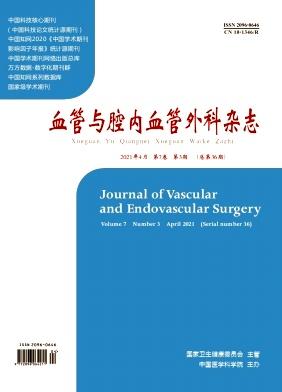Near-infrared spectroscopy to monitor spinal cord oxygenation in οpen thoraco-abdominal aortic surgery. A case series
引用次数: 0
Abstract
Objectives. We adopted the near-infrared spectroscopy (NIRS) technology to monitor the spinal oxygen supply through the paraspinous muscles oxygenation in agreement with the concept of “collateral network” circulation. We retrospectively investigated our database of subjects who underwent thoraco-abdominal aorta open repair assessing for the reliability of this monitoring to predict spinal cord injury. Methods. Consecutive patients who underwent elective thoraco-abdominal aorta open repair between March 2019 and September 2021. In addition to standard monitoring, patients received the monitoring of the paraspinous muscles oxygenation by NIRS. Results. In one patient a significant drop of the mean arterial pressure (49 mmHg) and the spinal-cord perfusion pressure (31 mmHg) occurred after the aortic clamping, with a contemporary lowering of the left-side oxygenation of paraspinous muscles (<40%). Both the blood pressure and the spinal cord perfusion pressure were restored within 10 minutes, but the oxygenation remained at an unsafe level (<55%) until the end of the surgery. This same patient experienced a lower-limb paralysis post-operatively. It did not happen in the other 11 cases of the sample. Conclusions. The main finding of our retrospective analysis indicates reliability of this technology to monitor the spinal cord oxygenation during open thoraco-abdominal aortic surgery and possibly predict spinal cord injury. Still, several questions need to be addressed about the suitability of this technology to the anatomic and pathophysiology of the spinal cord circulation近红外光谱监测ο笔胸腹主动脉手术中脊髓氧合。案例系列
目标。我们采用近红外光谱(NIRS)技术通过棘旁肌氧合监测脊髓供氧,符合“侧支网络”循环的概念。我们回顾性调查了数据库中接受胸腹主动脉切开修复术的受试者,评估了这种监测预测脊髓损伤的可靠性。2019年3月至2021年9月期间连续接受择期胸腹主动脉切开修复术的患者。除标准监测外,患者还接受了nirs对棘旁肌氧合的监测。1例患者在主动脉夹持后平均动脉压(49 mmHg)和脊髓灌注压(31 mmHg)显著下降,同时左侧棘旁肌氧合降低(<40%)。血压和脊髓灌注压均在10分钟内恢复,但氧合一直维持在不安全水平(<55%),直到手术结束。该患者术后出现下肢瘫痪。在样本中的其他11例中没有发生这种情况。我们回顾性分析的主要发现表明该技术在开放性胸腹主动脉手术中监测脊髓氧合的可靠性,并可能预测脊髓损伤。尽管如此,关于这项技术在脊髓循环的解剖和病理生理学上的适用性,仍有几个问题需要解决
本文章由计算机程序翻译,如有差异,请以英文原文为准。
求助全文
约1分钟内获得全文
求助全文

 求助内容:
求助内容: 应助结果提醒方式:
应助结果提醒方式:


